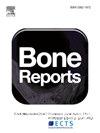Simulated microgravity accurately models long-duration spaceflight effects on bone and skeletal muscle in skeletally immature mice
IF 2.6
Q3 ENDOCRINOLOGY & METABOLISM
引用次数: 0
Abstract
Spaceflight (SF) and disuse result in decreases in bone and skeletal muscle volume that increase fracture risk. Hindlimb unloading (HLU) has been widely used to model the effects of microgravity. However, the effects of SF and HLU on bone and skeletal muscle have not been directly compared during long-duration SF. We examined the effects of five weeks of SF and HLU in the femurs of female Balb/c mice. For the first time, SF and HLU were directly compared using mice of the same age, strain, sex, and duration as a mission to the ISS. We hypothesized that HLU would accurately model SF, resulting in similar bone and skeletal muscle loss. Ten-week old female Balb/c mice were assigned to baseline, vivarium control, habitat control, and SF groups (n = 10/group). A separate cohort of 10-week female Balb/c mice were placed in HLU or control (n = 10/group). Femoral cortical area increased from baseline in all groups except HLU. The magnitudes of increases were lower in the SF and HLU groups. Similar effects were seen in trabecular bone. Femoral ultimate force decreased in SF and HLU groups, compared to control groups. Gastrocnemius and quadriceps mass was lower in SF and HLU mice than in control mice. HLU resulted in greater bone loss than SF, possibly due to differences in housing conditions. HLU effectively models long-duration effects of SF on the musculoskeletal system, highlighting its utility for studying astronaut health risks and developing countermeasures.
模拟微重力准确地模拟了长时间太空飞行对骨骼未成熟小鼠骨骼和骨骼肌的影响
太空飞行(SF)和不使用导致骨骼和骨骼肌体积减少,增加骨折风险。后肢卸载(HLU)被广泛用于模拟微重力的影响。然而,SF和HLU对骨和骨骼肌的影响尚未在长时间SF中直接比较。我们检测了5周的SF和HLU对雌性Balb/c小鼠股骨的影响。第一次,SF和HLU直接比较使用相同的年龄,品系,性别和持续时间的小鼠作为国际空间站的任务。我们假设HLU可以准确地模拟SF,导致类似的骨骼和骨骼肌损失。将10周龄雌性Balb/c小鼠分为基线组、室内对照组、生境对照组和SF组(n = 10/组)。另取10周龄雌性Balb/c小鼠,分别置于HLU组和对照组(n = 10/组)。除HLU外,所有组的股骨皮质面积均较基线增加。SF组和HLU组的增加幅度较小。小梁骨也有类似的效果。与对照组相比,SF组和HLU组股骨极限力降低。SF和HLU小鼠腓肠肌和股四头肌质量低于对照组小鼠。HLU导致的骨质流失比SF更大,可能是由于住房条件的差异。HLU有效地模拟了SF对肌肉骨骼系统的长期影响,突出了其在研究宇航员健康风险和制定对策方面的实用性。
本文章由计算机程序翻译,如有差异,请以英文原文为准。
求助全文
约1分钟内获得全文
求助全文
来源期刊

Bone Reports
Medicine-Orthopedics and Sports Medicine
CiteScore
4.30
自引率
4.00%
发文量
444
审稿时长
57 days
期刊介绍:
Bone Reports is an interdisciplinary forum for the rapid publication of Original Research Articles and Case Reports across basic, translational and clinical aspects of bone and mineral metabolism. The journal publishes papers that are scientifically sound, with the peer review process focused principally on verifying sound methodologies, and correct data analysis and interpretation. We welcome studies either replicating or failing to replicate a previous study, and null findings. We fulfil a critical and current need to enhance research by publishing reproducibility studies and null findings.
 求助内容:
求助内容: 应助结果提醒方式:
应助结果提醒方式:


